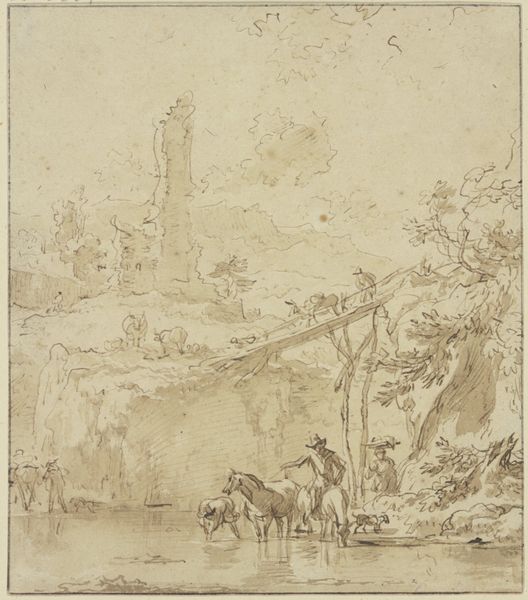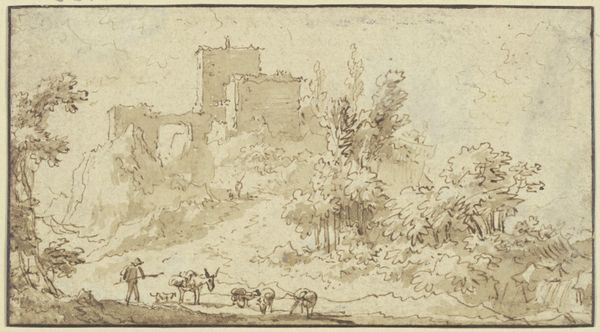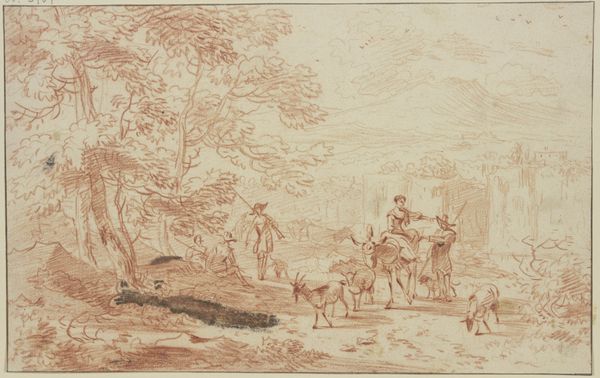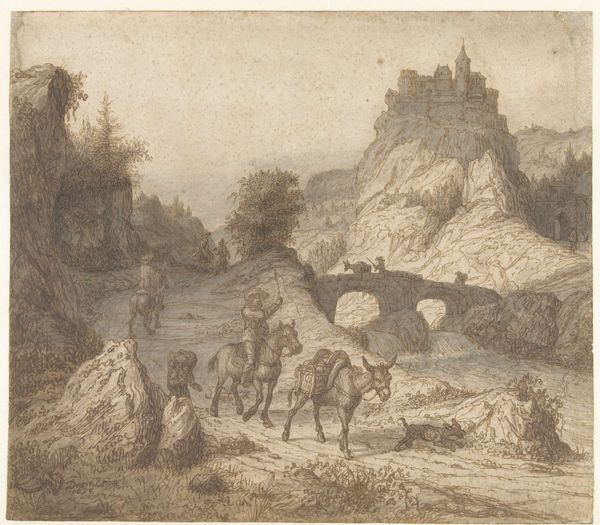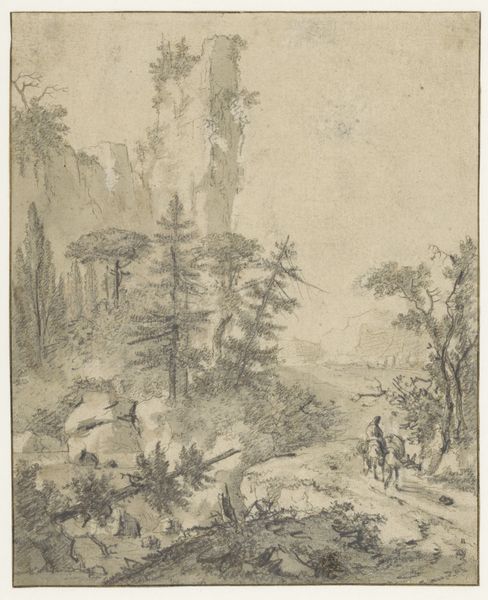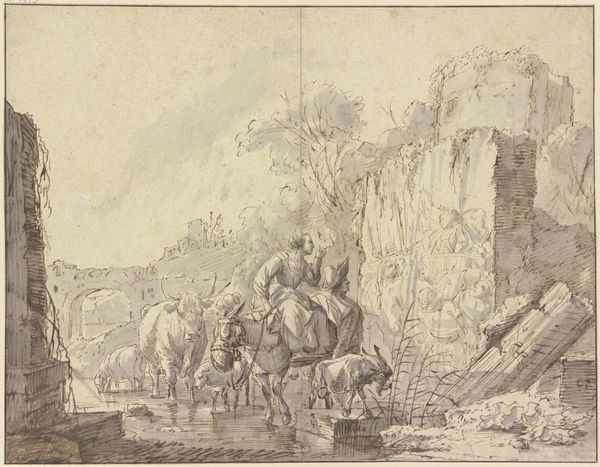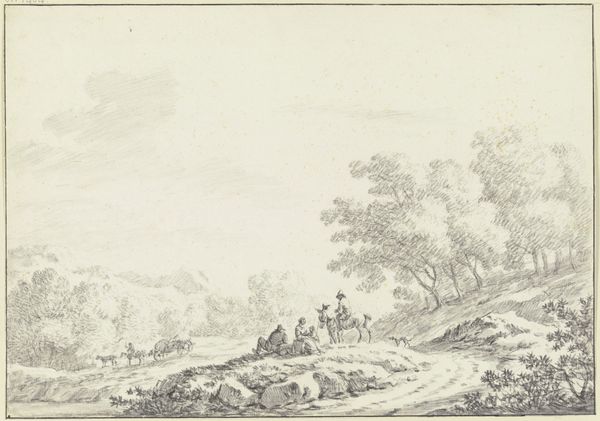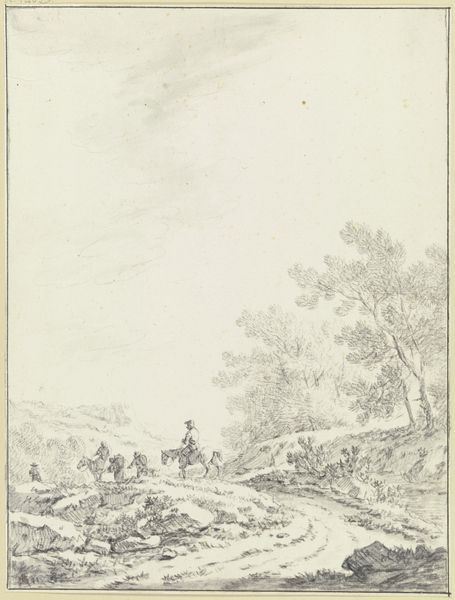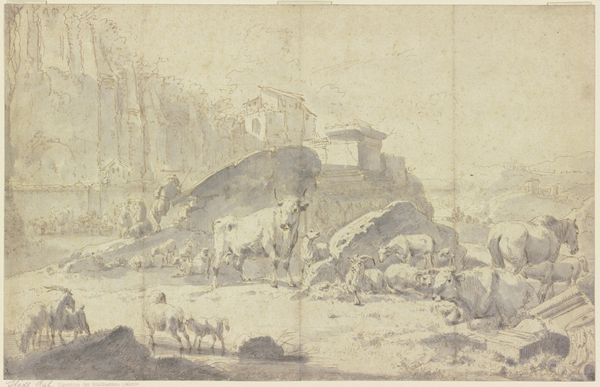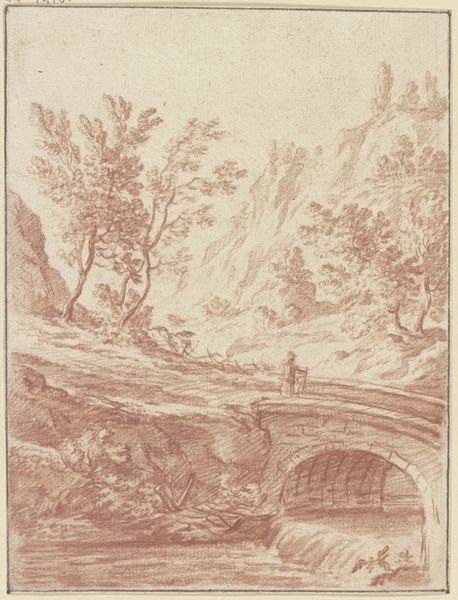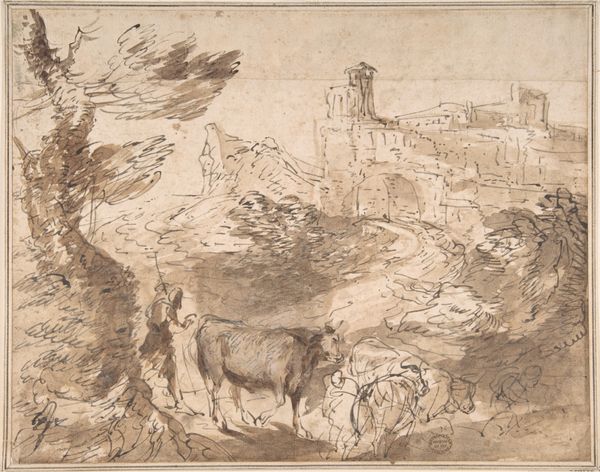
Burgruine, über dem Wasser ein Steg im Vordergrund, Hirte zu Esel und Hirten zu Fuß mit Vieh
0:00
0:00
drawing, paper, ink
#
drawing
#
baroque
#
landscape
#
paper
#
ink
#
history-painting
Copyright: Public Domain
Nicolaes Berchem made this drawing, Burgruine, with pen and brown ink, depicting a ruined castle, a bridge, and several figures with livestock. Berchem was a Dutch painter active in the mid-17th century. He specialized in Italianate landscapes. The ruined castle in the background could be read as a symbol of the decline of feudal power in Europe. By the 17th century, feudalism was largely replaced by more centralized states with market economies. The figures with their animals represent a rural existence that was increasingly idealized in art, even as more and more people moved to cities. This shift prompted discussion about the virtues of different kinds of life. The art market was emerging as a powerful institution shaping artistic production. Artists often catered to the tastes of wealthy urban patrons, creating nostalgic and romanticized images of rural life, such as those we see here. Art historians can study paintings like this alongside other texts and images from the period, such as literature, political pamphlets, and economic data, in order to understand the complex interplay between art and society.
Comments
No comments
Be the first to comment and join the conversation on the ultimate creative platform.
